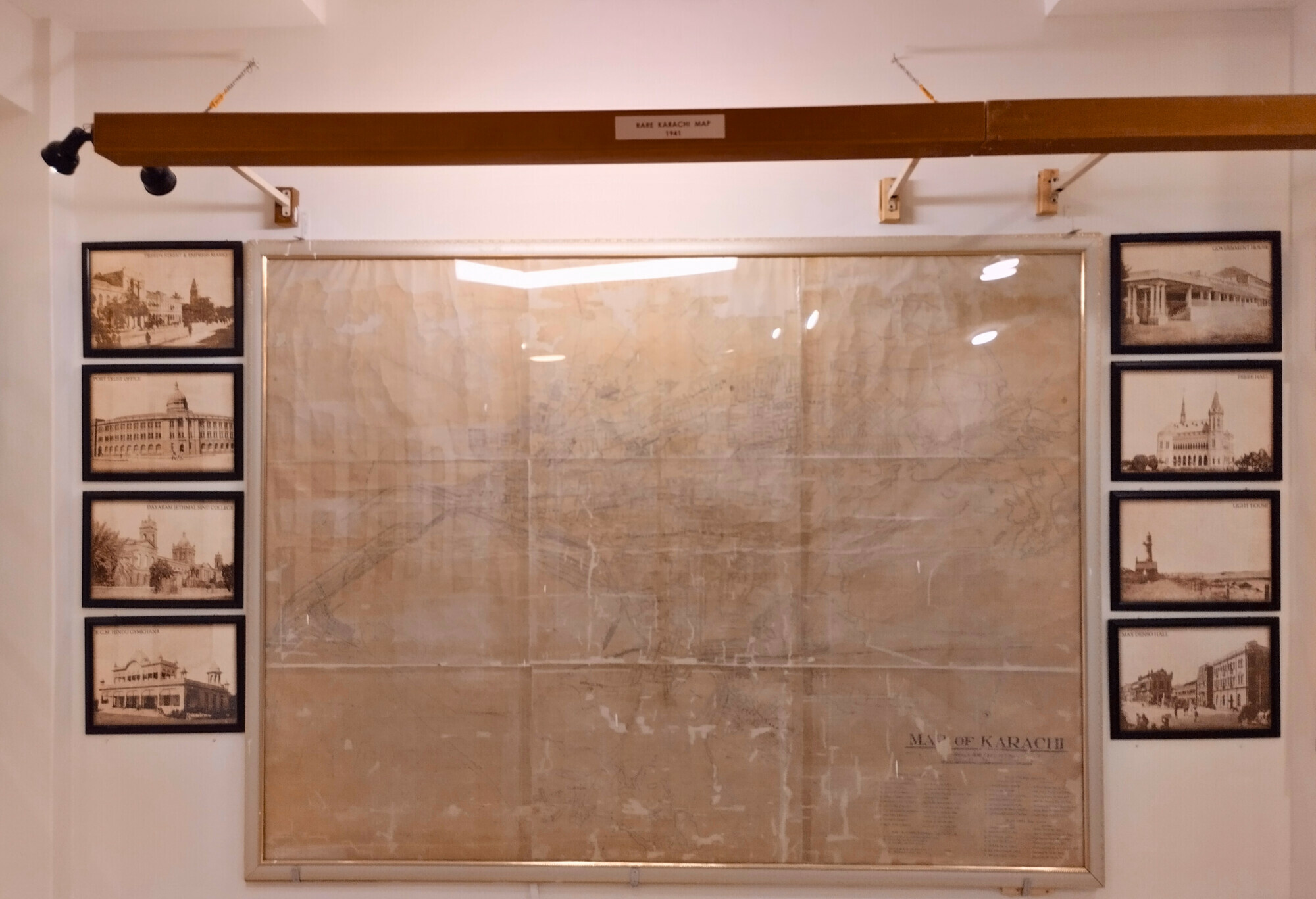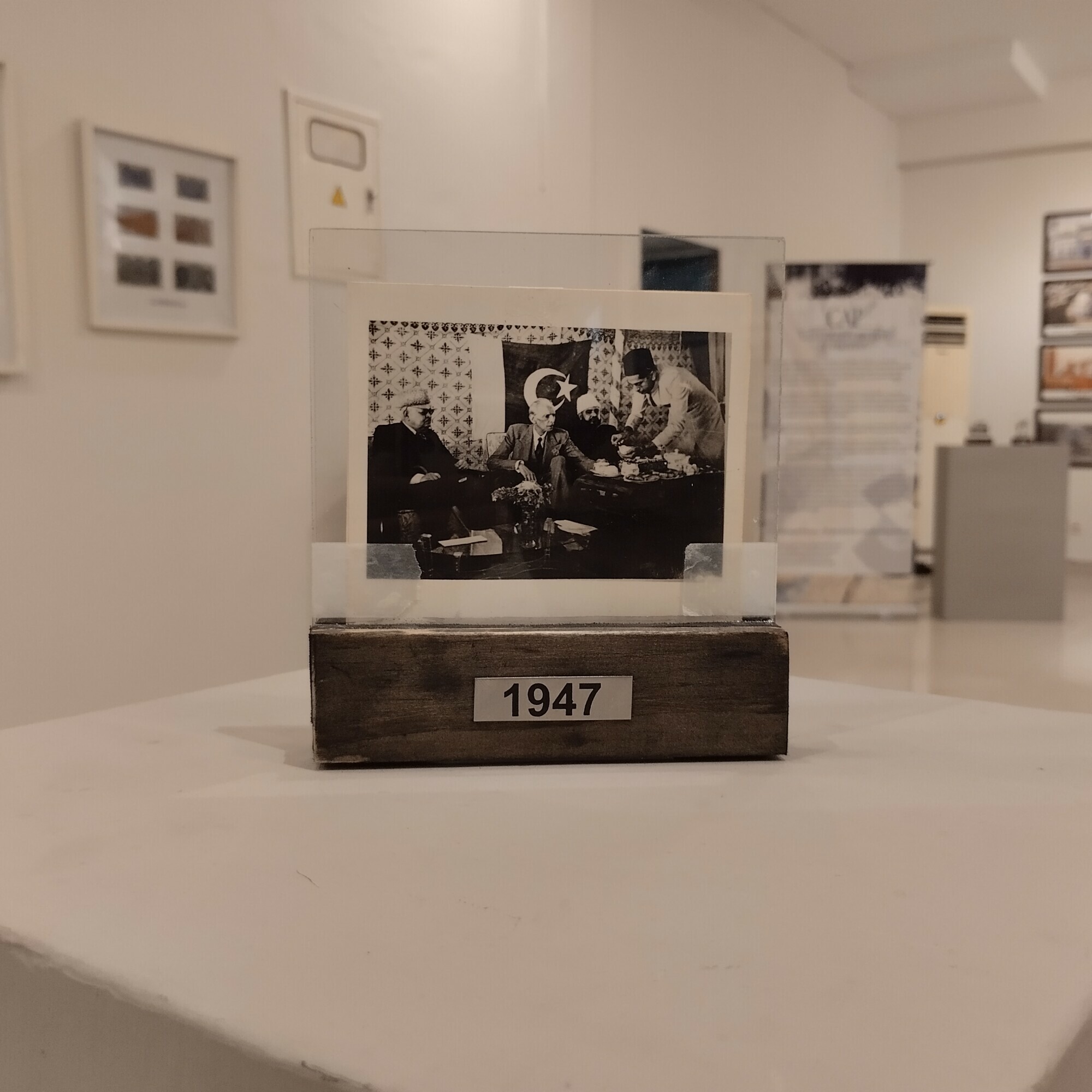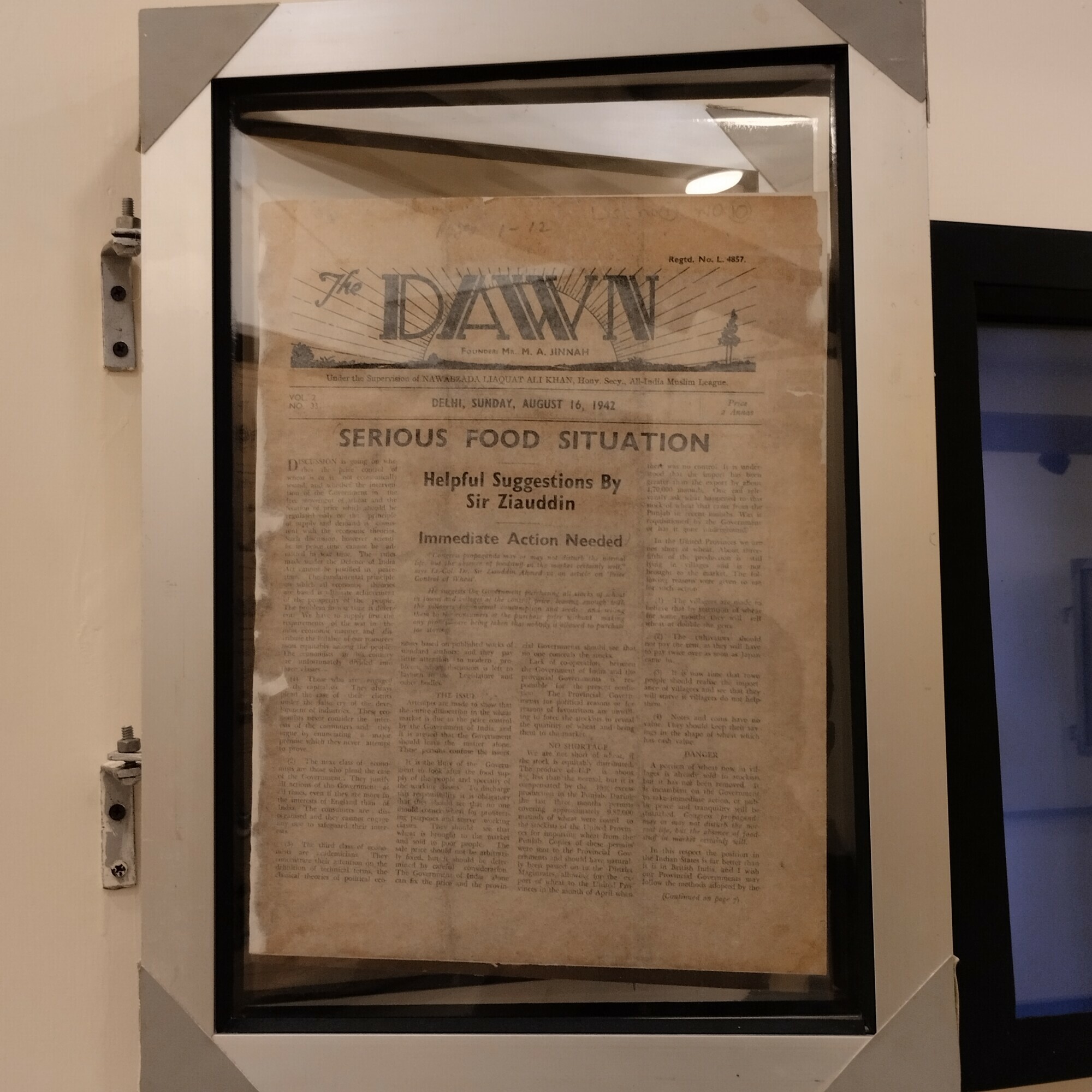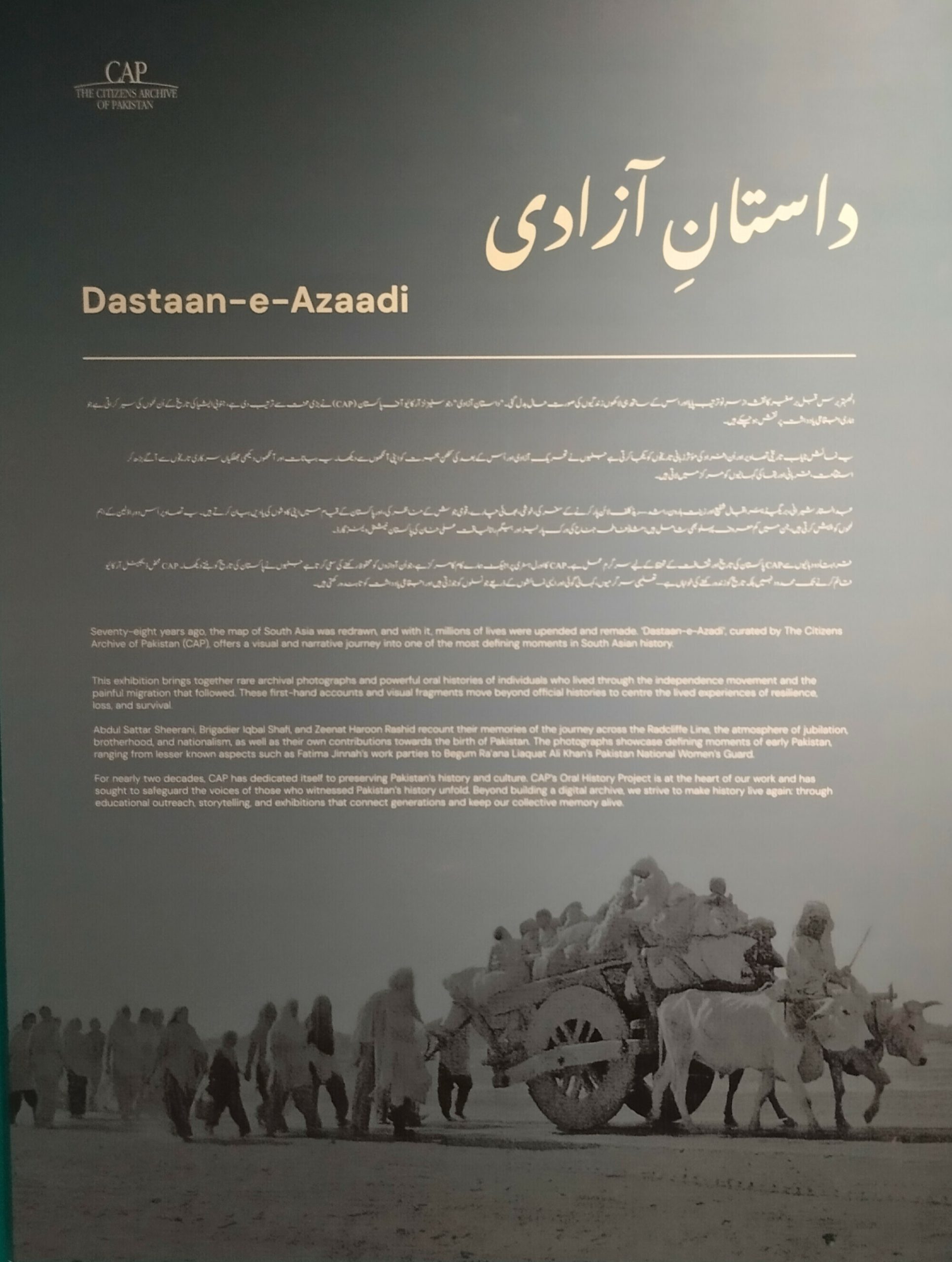August 15, 2025
KARACHI – The Sindh Archives in Karachi is hosting the Azaadi ki Rah (Road to Freedom) exhibition as part of the city’s ongoing Independence Day festivities. The exhibition, which runs till 5pm on August 14, has been organised by the Sindh Culture, Tourism, Antiquities and Archives Department, with assistance from the Citizens Archive of Pakistan (CAP) and the State Bank.

The Sindh Archives’ main hall displaying a collection of old documents from the province. PHOTO PROVIDED BY DAWN
The main hall at the Archives building was lined with old documents, manuscripts and maps. Letters dating back to the 1800s were placed alongside pre-Partition speeches, books, and clippings from newspapers announcing various events and rallies of the All-India Muslim League.

A historical map of Karachi from 1941 alongside pictures of city landmarks of the time. PHOTO PROVIDED BY DAWN
The picture gallery hosted a display of original photographs from the 1940s and 1950s alongside the archives’ static display of photos from the life of the Quaid. The gallery also displayed a wall-sized map of Karachi from 1941 alongside pre-independence photographs of iconic landmarks in the city, such as Frere Hall, Denso Hall, the Karachi Port Trust Building and DJ Science College. A collection of coins and banknotes from the first series issued by independent Pakistan was also on display.

Original photographs from before Partition were displayed, including this picture of the Quaid dining with Muslim leaders. PHOTO PROVIDED BY DAWN
The archives’ collection of newspapers was also open to the public, with several papers from before and after Partition meticulously restored and placed on view, including a 1942 copy of Dawn.

A restored copy of Dawn from 1942 on display as part of the newspaper collection at the Sindh Archives. PHOTO PROVIDED BY DAWN
The Story of Independence — an exhibit by the Citizens’ Archive of Pakistan
A special section was dedicated to the Dastaan-e-Azaadi (Story of Independence) exhibit organised by CAP. A series of rare photographs from the collection of photographer FE Chaudhry documenting post-Partition Pakistan were displayed, including a now iconic picture of migrants crowding on a train to Pakistan.

A poster for CAP’s Dastaan-e-Azaadi exhibit. PHOTO PROVIDED BY DAWN
The major attraction, though, is the multimedia exhibition arranged by CAP’s Oral History Project. Videos and photographs of the events surrounding the independence of Pakistan are complemented by narration from people who lived through the events themselves.
A narration from Zeenat Haroon Rashid — daughter of Muslim politician and businessman Sir Abdullah Haroon — details her account of the making of Pakistan’s national flag. She recounts how the Quaid sent back an initial design and gave instructions for the flag’s white strip to make up 30pc of the banner in recognition of the country’s minorities.

Narrations from Partition survivors are available as part of audio-visual presentations curated by the Oral History Project. PHOTO PROVIDED BY DAWN
Another account of Abdul Sattar Sheerani sheds light on his experience migrating to Pakistan in 1947. He spoke of how people crowded the platforms at stations on both sides of the newly drawn border, with crowds in India hurling abuses at the fleeing Muslims while crowds in Pakistan rushed to offer food, clothes and other essentials to weary travellers.
Shaheen Jaffrani, a senior project manager at CAP, said their goal with the Oral History Project as a whole was to present a view of Pakistani history through the eyes of those who’ve lived through it, which often adds much-needed context to what exists in history books. She said the generation that built Pakistan is slowly fading away, which is why CAP is working to preserve their stories through the project.


